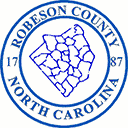Helpful Measuring Tips
go.ncsu.edu/readext?940849
en Español / em Português
El inglés es el idioma de control de esta página. En la medida en que haya algún conflicto entre la traducción al inglés y la traducción, el inglés prevalece.
Al hacer clic en el enlace de traducción se activa un servicio de traducción gratuito para convertir la página al español. Al igual que con cualquier traducción por Internet, la conversión no es sensible al contexto y puede que no traduzca el texto en su significado original. NC State Extension no garantiza la exactitud del texto traducido. Por favor, tenga en cuenta que algunas aplicaciones y/o servicios pueden no funcionar como se espera cuando se traducen.
Português
Inglês é o idioma de controle desta página. Na medida que haja algum conflito entre o texto original em Inglês e a tradução, o Inglês prevalece.
Ao clicar no link de tradução, um serviço gratuito de tradução será ativado para converter a página para o Português. Como em qualquer tradução pela internet, a conversão não é sensivel ao contexto e pode não ocorrer a tradução para o significado orginal. O serviço de Extensão da Carolina do Norte (NC State Extension) não garante a exatidão do texto traduzido. Por favor, observe que algumas funções ou serviços podem não funcionar como esperado após a tradução.
English
English is the controlling language of this page. To the extent there is any conflict between the English text and the translation, English controls.
Clicking on the translation link activates a free translation service to convert the page to Spanish. As with any Internet translation, the conversion is not context-sensitive and may not translate the text to its original meaning. NC State Extension does not guarantee the accuracy of the translated text. Please note that some applications and/or services may not function as expected when translated.
Collapse ▲Did you know there are actually two types of measuring cups for cooking and baking? One is for dry ingredients and the other is for liquid ingredients. I’m sure you probably heard your grandmother or mom say, “just add a little of this, and a little of that” when you asked how to make a certain dish. However, you cannot get away with that when you bake, because you need the exact amount of product for the chemical reaction to happen properly. Moreover, when cooking there is more flexibility by adding more or less to your recipe, according to your taste.
Dry measuring cups are usually individual for each measurement. Dry ingredients include sugar, flour, brown sugar, and powdered sugar. When measuring dry ingredients, use the flat side of a butter knife or spatula to level the top evenly. I usually have a plate I use to measure over when leveling the top, or you can level over the container of the product. Also, semi-liquid ingredients such as sour cream, peanut butter, and yogurt are measured in dry-ingredient measuring cups. Sometimes you will need to tap the bottom of the cup on a counter to get it to fill the cup without air bubbles, and you should level off for accuracy with these ingredients as well.
Liquid ingredients are measured in a clear measuring glass or a clear plastic measuring cup, and they usually have a spout on the end for pouring. For accurate measuring, it should be on a level surface. To get an accurate reading, bend down to eye level with the cup to measure. For smaller amounts such as teaspoons and tablespoons, it is equally important to use measuring spoons. They are used for measuring dry and wet ingredients.
Sometimes it can be confusing when cutting measurements in half for a recipe. Here are some basic measurement reductions if you want to cut the recipe in half.
- Half of ¼ Cup equals 2 Tablespoons
- Half of 1/3 Cup equals 2 Tablespoons + 2 teaspoons
- Half of 1/2 Cup equals 1/4 Cup
- Half of 2/3 Cup equals 1/3 Cup
- Half of 1 Tablespoon equals 1 1/2 teaspoons
- Half of 1 teaspoon equals 1/2 teaspoon
- Half of 1/2 teaspoon equals 1/4 teaspoon
- Half of 1/4 teaspoon equals 1/8 teaspoon
- Half of 1/8 teaspoon equals a dash
If you are measuring dry ingredients and don’t have a dry measuring cup, listed below are the equivalent measurements if you are using a measuring spoon.
- 1 tablespoon (Tbsp) = 3 teaspoons (tsp)
- 1/8 cup = 2 Tbsp
- ¼ cup = 4 Tbsp
- 1/3 cup = 5 1/3 Tbsp
- ½ cup = 8 Tbsp
- 2/3 cup = 10 2/3 Tbsp
- ¾ cup = 12 Tbsp
- 1 cup = 16 Tbsp
Liquid measurement equivalents
- 1 gallon = 4 quarts = 8 pints = 128 ounces
- 1 quart = 4 cups = 32 ounces
- 1 pint = 2 cups = 16 ounces
- 1 cup = 8 ounces
Hopefully, these helpful hints will help you when cutting recipes in half or using the equivalent amounts if you don’t have the exact tool when cooking or baking. Most importantly, remember to have fun when baking and cooking. Sometimes the best cooking recipes are the ones we test and tweak to our liking.
For more information, contact Wendy Maynor, Extension Family and Consumer Sciences Agent, at 910-671-3276, by Email at Wendy_Maynor@ncsu.edu, or visit our website.




